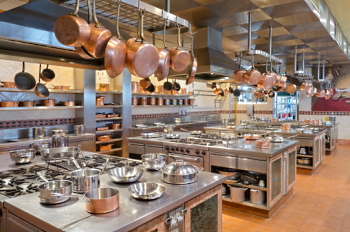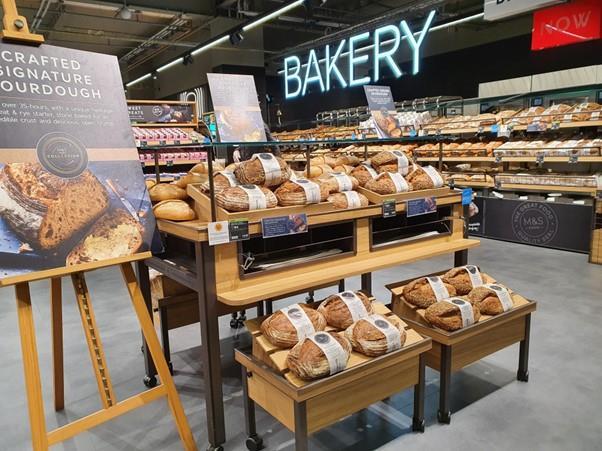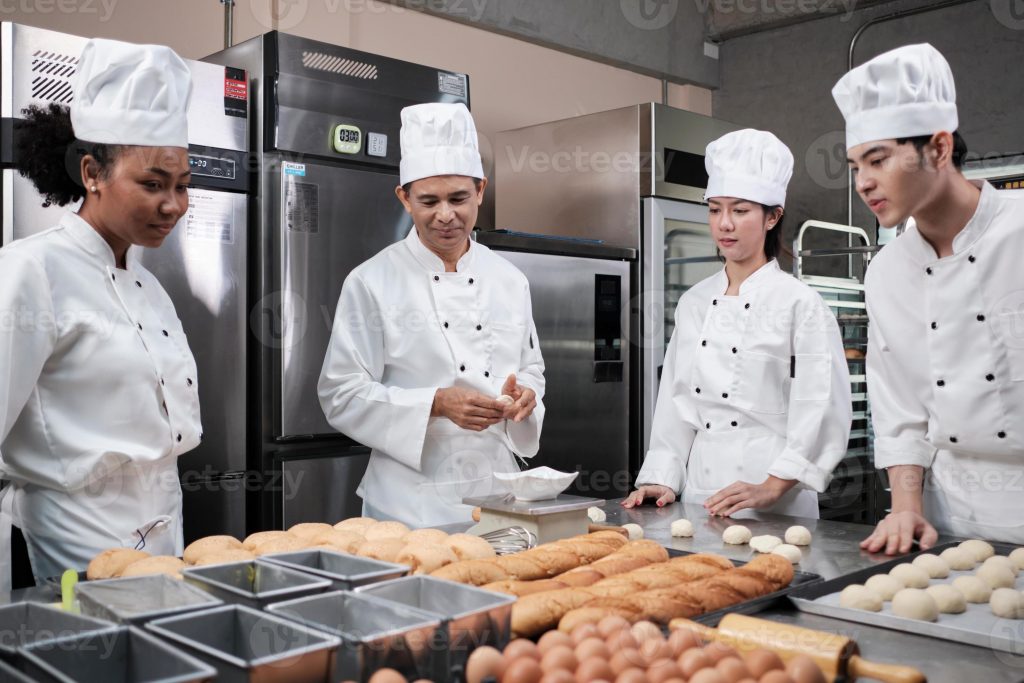Making a strong and effective design for Azure, or any architecture, is like baking a perfect cake. You need the right recipe (knowledge), experience, and technique. I’ve spent a lot of time in the “kitchen” (IT field) making different “cakes” (architectures), and I’ve learned that some key ingredients always stay the same.

This article is a guide to help you bake your own “Azure cake” (build an architecture within Microsoft Azure). The tips and advice I’m sharing come from years of hands-on experience and learning the ins and outs of the “kitchen” (Azure environment). I’ve noticed that knowing your way around the “kitchen” (technological knowledge) is important, but the real magic comes from following the right recipe (method) and having the baking experience. In fact, the kind of “oven” (technology) you use is often the last thing you need to think about when baking a “cake” (designing an architecture).
To start, let’s look at a great cookbook – the Azure Well-Architected Framework (WAF). This “cookbook” gives you guiding principles to bake “cakes” that are delicious (reliable), look good (secure), are easy to make (efficient), and don’t cost a lot (cost-effective) on Microsoft Azure. It doesn’t give you a step-by-step guide, but more like a set of good baking techniques and ways to evaluate your “cakes,” ensuring they taste better over time.
The Azure Well-Architected Framework cookbook is built around five key baking techniques (pillars). These techniques are the core skills you need to bake a good “Azure cake.”

The first one is Cost Optimization, this is like using your ingredients wisely to make sure you’re not overspending and getting the best cake possible. It means spotting and cutting out wasted ingredients and using what you have in the best way.
The initial technique, Cost Optimization, is akin to a prudent baker using ingredients meticulously. It’s about getting the most delicious and high-quality cake without breaking the bank. This involves a keen understanding of how and where to use your resources to make sure you’re not overusing and wasting any valuable ingredients.
One of the key aspects of cost optimization in the ‘Azure bakery’ involves knowing your resources – essentially understanding the ‘ingredients’ you have at your disposal. These resources could include different types of virtual machines (VMs), storage systems, and various other Azure services.
Having a well-planned strategy on how to use these resources can significantly influence your cost optimization. For instance, selecting specific VM tiers, similar to choosing the right quality of flour for a cake, can have a massive impact on the performance and the cost. Using high-performance VM tiers where they are needed (like the frosting for a perfect cake) and low-performance ones where they suffice (the base of the cake) ensures that you are getting the most bang for your buck.
Similarly, understanding the type of storage systems you need can also enhance cost optimization. Just as using refrigeration for dairy products and a pantry for dry ingredients in a bakery, Azure provides different types of storage systems (like Azure Blob Storage, Azure Files, or Azure Queues) for different needs. Selecting the right type for each kind of data (ingredient) can significantly save costs.
Lastly, sticking to specific families of resources can also help negotiate better costs with Microsoft. It’s like striking a deal with your supplier for a better price if you buy all your dairy products from them. By utilizing specific VM tiers or types of storage systems, you might get a volume discount or other benefits that can further optimize costs.
In short, Cost Optimization is about baking your ‘Azure cake’ efficiently. It’s about having a clear strategy for using your resources, understanding your needs, and leveraging the flexibility of Azure to get the best value.

The second one, Operational Excellence, and it can be likened to running a well-ordered, efficient, and ready-for-anything kitchen. Just like in any high-functioning kitchen, maintaining system health, having the right tools at hand, and being ready for any kitchen disasters is crucial in our ‘Azure bakery.’ Maintaining system health is akin to keeping our kitchen clean. In our Azure kitchen, this means constantly monitoring our systems to ensure everything runs smoothly. Much like a head chef regularly checks their ovens and pans, we must keep a close eye on our Azure environment. By staying on top of potential issues, we can prevent minor ‘spills’ from becoming full-blown kitchen fires.
Monitoring, however, doesn’t mean we need to stand over our ‘stove’ round-the-clock. Today, we have a range of third-party tools that can do the job for us, alerting us when something’s amiss. It’s like having an assistant chef whose sole job is to keep an eye on the ‘oven.’ However, choosing such a third-party product requires a thoughtful strategy. We need to consider a long-term partnership, much like establishing a relationship with a reliable food supplier.
On the other hand, if we have a skilled team, we could build our monitoring system or ‘assistant chef.’ Azure provides a host of built-in features and services like Azure Monitor and Azure Log Analytics that our team can leverage to build a reusable monitoring framework. It’s like creating our recipe for keeping the ‘oven’ at the right temperature.
Being ready with the right tools (supportability) is about having everything we need to bake our ‘cakes’ effectively and efficiently. In the Azure kitchen, this means using automation to handle routine tasks, just as we would use mixers, blenders, and other automated tools in a physical kitchen. Automation ensures that we can focus on the crucial aspects of our ‘baking’ while mundane tasks are taken care of automatically.
Finally, just like having a fire extinguisher on hand in case a cake burns, having an incident response plan is a must. It’s our contingency plan that tells us exactly what to do when a ‘fire’ breaks out in our Azure kitchen. This plan could include measures like automatic failover to a backup system or emergency alerts to key personnel. It’s our safety net that ensures, no matter what, we can keep our ‘kitchen’ running and our ‘cakes’ baking.
In essence, Operational Excellence in the Azure ‘kitchen’ is all about being proactive, prepared, and proficient. With a clean ‘kitchen,’ the right ‘tools,’ and a fool proof plan for ‘kitchen fires,’ we can ensure that our ‘bakery’ runs smoothly, efficiently, and ready to serve up delightful ‘cakes’ at a moment’s notice.

The third recipe in our cookbook, Performance Efficiency, can be thought of as optimizing the use of your “oven” – your resources – to achieve the best “baking” results, or meet your solution’s requirements. It’s about adjusting the “heat” as your baking needs change, like whipping up more cookies when unexpected guests arrive, or using new baking tools as they hit the market. It’s all about having your oven at the right temperature (auto-scaling), using the right bakeware (types of storage), and smoothly managing the baking process (performance-related aspects).
Just like how you wouldn’t start baking without preheating your oven or knowing the right temperature for your cake, you shouldn’t start building your solution without understanding the performance requirements. Conducting performance testing is like doing a trial run of your recipe, it helps identify any potential issues before the real baking begins. Running these tests help ensure your solution can handle the load it’s expected to bear and perform efficiently under those conditions.
This is where the concept of auto-scaling, or adjusting the “oven temperature”, comes into play. Azure’s auto-scaling capabilities allow you to adjust resources on the fly, based on demand. It’s like having an intelligent oven that increases or decreases the heat based on the type of cake you’re baking. This kind of optimization ensures your solution is always performing at its best while keeping resources and costs in check.
Choosing the right types of storage or “bakeware” is another crucial aspect of performance efficiency. Depending on the solution, you may need different types of storage, much like how different cakes require different baking pans. Azure offers a wide range of storage options – from blob storage for unstructured data to Azure SQL for relational data – akin to a wide variety of baking pans in different shapes and sizes for every baking need.
However, knowing what your solution needs require some experiments. This is where building Proof of Concepts (POCs) can be invaluable. A POC is like a small test cake you bake to see if a new recipe works. It allows you to push the boundaries of the technology you plan to use, testing its capabilities and limits. These POCs can reveal potential challenges and benefits of a particular technology choice, helping you make informed decisions.
Lastly, managing other “baking steps” is about ensuring all elements of your solution work together seamlessly. It’s like ensuring your dough is mixed right, the oven temperature is set correctly, and the cake is taken out at the right time. In the Azure world, it could mean optimizing network configurations, load balancing, or managing databases, among other things.
Performance Efficiency in our Azure ‘bakery’ is about baking smartly and efficiently. It involves knowing your ‘oven,’ understanding your baking needs, testing your recipes, and managing the baking process smoothly. With careful planning, testing, and management, you can ensure that your ‘cakes’ are always baked to perfection, regardless of how complex the recipe is or how many cakes you need to bake.

The fourth ingredient in our Azure recipe book, Reliability, is akin to ensuring that your cakes always turn out perfectly (resilient and recoverable). It’s all about ensuring that your “cakes” (services or applications) are always ready to serve (high availability), you have a Plan B for when your cake flops (disaster recovery), and you can keep your bakery open, no matter what (business continuity).
Just as you’d sort your baking ingredients based on their role in the recipe, it’s essential to categorize your Azure resources based on their reliability requirements. This is a crucial part of the CIA triad assessment – a method we’ll delve into further later on. Some resources may be critical to your operations (like the flour in a cake recipe), while others might be less so (like the sprinkles on top). Understanding this helps you allocate resources where they’re most needed and design a resilient architecture that can withstand disruptions.
High availability, or always having your “cakes” ready to serve, is the cornerstone of reliability. In the Azure bakery, this might mean setting up redundant services or using Azure’s traffic manager to distribute user load across multiple instances. It’s like having multiple ovens baking the same cake, so even if one fails, the others ensure your cake is still ready on time.
Disaster recovery, or having a backup plan for a baking fail, is another essential aspect of reliability. You need to be prepared for anything, from a simple burnt cake to a full kitchen fire. Azure provides various tools to handle these situations, such as Azure Site Recovery and Azure Backup. It’s like keeping a spare cake ready, just in case the one in the oven doesn’t turn out as expected.
Lastly, business continuity, or keeping your bakery running, is about having a strategic plan in place to ensure that your business can continue operating even in the face of major disruptions or disasters. It’s the resilience to bounce back after a setback. Azure offers services like Azure Site Recovery that help ensure business continuity by providing a failover environment that can keep your applications running even when your primary services are down. It’s like having a mobile bakery that you can set up and start baking in, even if your main bakery is out of commission.
Reliability in our Azure bakery is not just about baking perfect cakes but being prepared for any disruptions that might occur. By understanding the criticality of your resources, ensuring high availability, planning for disaster recovery, and maintaining business continuity, you can keep your Azure bakery open and your cakes always ready to serve, no matter what happens.

The last, but certainly not least, technique in our Azure ‘baking’ guide is Security. In simple terms, it’s about ensuring that our Azure ‘cake’ is safe from those who want a piece but haven’t been invited to the party (threats). This protection covers all aspects from ingredients (data) to the bakers (users) and, most importantly, how we follow the best practices (regulations) in our ‘kitchen’ (Azure environment).
One way to approach this vital aspect is by employing the CIA Triad, a renowned methodology in the world of IT ‘bakeries.’ CIA here stands for Confidentiality, Integrity, and Availability – the three key ingredients that make our ‘cake’ not only tasty but also safe and dependable.
Confidentiality is about keeping our secret recipes, well, secret. In the Azure ‘bakery,’ this equates to securing our data. It’s like having a trusted vault where we store our most precious recipes so that only authorized bakers can access them. And, just like in a physical bakery, we also need to control who has access to our ‘kitchen,’ deciding who gets to ‘bake’ and who doesn’t (managing identities and access).
Integrity is about ensuring our ‘cakes’ come out the same way each time we bake. In the Azure realm, this involves making sure that the data we use to build our applications is reliable, consistent, and accurate. Just as a small alteration in a cake recipe can ruin the entire dessert, any unauthorized modification to data can potentially collapse an Azure architecture.
Lastly, Availability is all about ensuring our ‘cakes’ are ready when our customers want them. We need to guarantee that our ‘bakery’ (systems) is always open for business and can meet demand when it arises. This could mean having backup generators to keep our ovens running during a power outage, or in Azure terms, designing our architectures for high availability and disaster recovery.
For those of you eager to delve deeper into the world of ‘baking’ secure Azure ‘cakes’, I highly recommend my handbook, “Practical Security Handbook: Surviving and Thriving in Azure Cloud Architecture with the CIA Triad“.
This handbook serves as an in-depth guide, offering practical advice and detailed methodologies for implementing the CIA Triad in your Azure architecture.
In essence, building a secure Azure architecture is akin to running a successful bakery. It’s about understanding your ‘kitchen’ (the Azure environment), crafting the perfect ‘cake’ (designing your architecture) with the best ingredients (data), and serving it up fresh and safe, every single time. Remember, even the most delicious ‘cake’ can leave a bitter taste if it’s not baked following the best security practices. And the CIA Triad, alongside the Azure Well-Architected Framework, can be your trusted recipe for success.
But remember, while the Azure Well-Architected Framework is a great cookbook, it doesn’t cover everything. There are other important things to think about, like what type of cakes your bakery (company) wants to make (business strategy), what ingredients and tools you already have (existing resources), and your baking style (methodology).
For example, your bakery’s menu (business strategy) will shape what kind of cakes you’re baking (the design of the architecture). This could be how big the cakes need to be (scalability), whether you’re combining flavors (integrating with other systems), and how the cakes taste (user experience).
The ingredients and tools you already have in the kitchen (existing resources) are also very important. This can include things like the kind of oven (hardware and software resources) you have or how skilled your bakers (personnel) are. Having experienced bakers who know how to use Azure can make the baking (development) process quicker and cheaper. But if you’re lacking in experienced bakers, it could slow things down.

Your bakery’s baking style (methodology) also has a big impact on the baking process. If you’re used to quickly baking small batches of different cakes (agile development practices), this would shape the way your kitchen is set up (architecture). But if you’re used to baking large batches of the same cake (waterfall development), you would need to plan your kitchen layout (architecture) more carefully.
In short, baking a great “Azure cake” isn’t just about using the Azure Well-Architected Framework cookbook. It’s about knowing your bakery and what it needs, and making smart choices based on that.
Another important thing to think about is what’s already in your pantry (existing internal resources and systems). You should try to use what you already have and, if needed, improve or replace it. Knowing what to use, when to use it, and how to use it, is the secret to good baking (designing a robust Azure architecture).
In conclusion, baking a great “Azure cake” is a tricky task. You need to understand your kitchen tools (technology), have a clear idea of what you want to bake (goals and constraints of the project), and be able to make smart choices in a fast-paced kitchen (rapidly changing environment). The Azure Well-Architected Framework, along with a good understanding of your bakery (company’s context), can give you a solid start. But at the end of the day, how well your “cake” turns out depends on the baker (architect) – their skills, experience, and ability to make the right choices.

